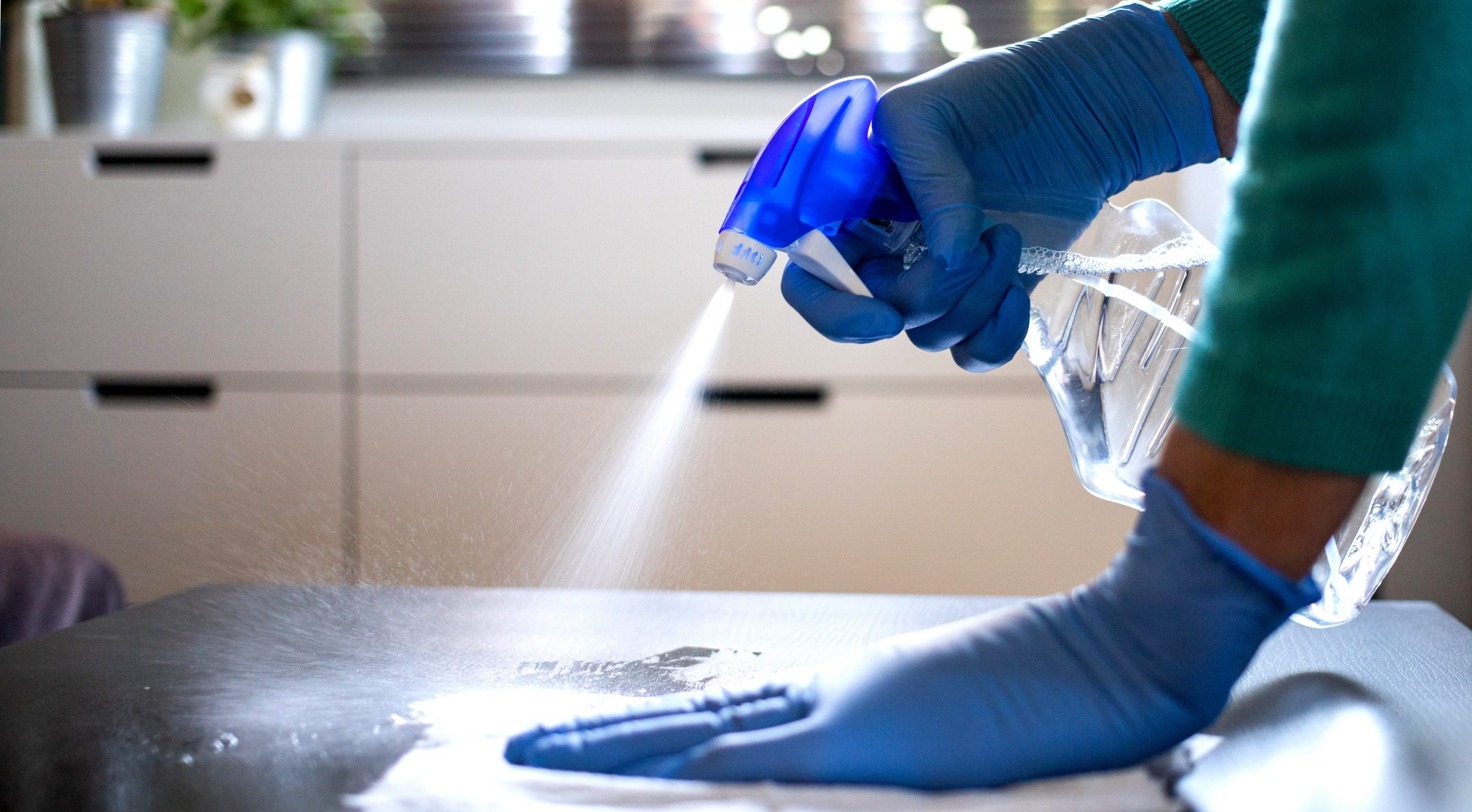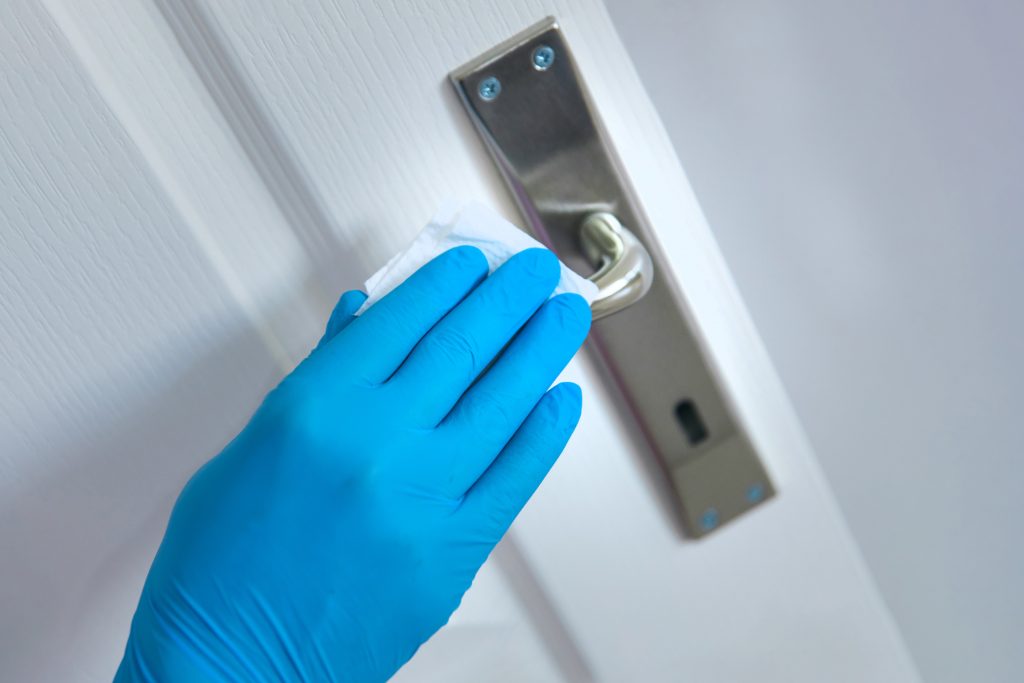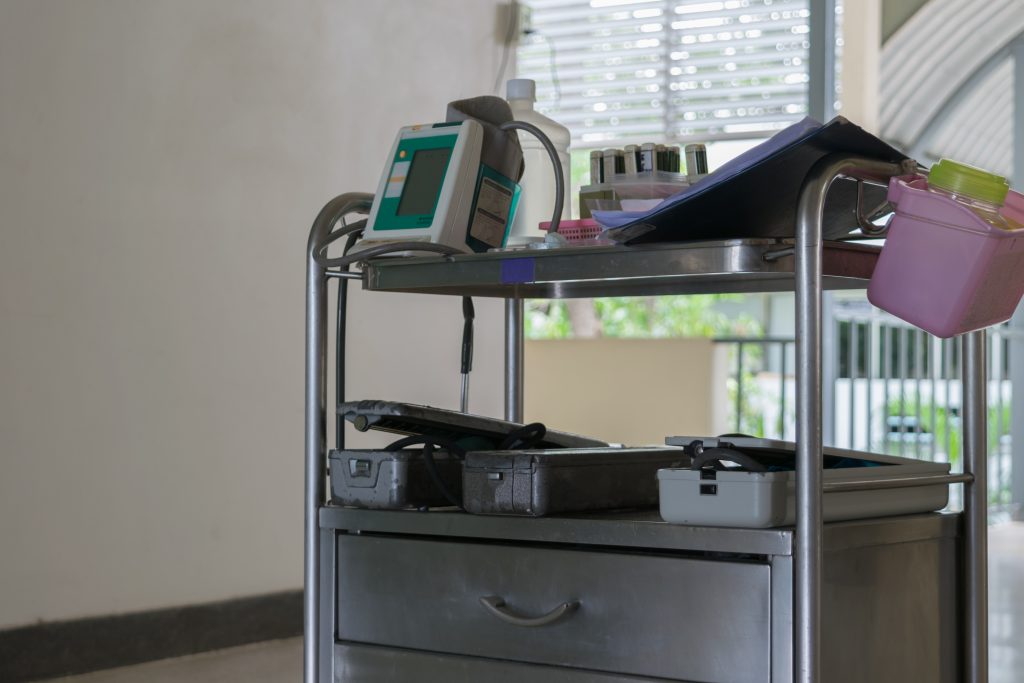
Surfaces are known to be one of the main vectors of transmission of infections in healthcare settings and contribute to increased rates of hospital-acquired infections (HAIs). To combat the source of the HAIs, hospitals have started using very aggressive, instant-kill disinfectants and cleaning solutions.
Heavy application of these chemicals to contaminated surfaces over time can result in decolouration, increased roughness, and, as a consequence, nooks and crannies, that can lead to reduced efficacy of cleaning protocols.
What are nooks and crannies?
By definition, nooks and crannies are small spaces that are difficult to access and can be found on surfaces or between materials. A rough surface with nooks and crannies has more hiding spaces for microbes where they evade cleaning and disinfection, making it more difficult for the staff to disinfect these obscured cracks and fractures.
These tiny spaces sometimes can barely be noticed and can contribute to challenges for infection control and prevention measures. As we know, microorganisms are very small in size and a surface roughness diameter of only 10nm would be more than enough to allow contamination to occur.
Nooks and crannies can serve as a potential reservoir for harmful pathogenic microorganisms where they can escape from being inactivated and increase in numbers, therefore possessing higher risks to patients and staff. Surfaces such as stainless steel, plastics, polymers, and fabric coats have different properties and would react differently with different levels of disinfectants.
According to its efficiency and ability to kill bacterial spores, an antimicrobial product can belong to one of four distinct groups: sterilant or high-, intermediate- and low-level disinfectant. Examples of these include: heat and steam for sterilant, hydrogen peroxide and peracetic acid for high-level disinfectants, hypochlorite and iodophors for intermediate-level disinfectants, and phenolics and quaternary ammonium compounds for low-level disinfectants.
In addition, other innovative methods may also have an impact on surfaces such as ethylene oxide, ozone, hydrogen peroxide vapour and ultraviolet (UV) light. It is vital to make sure that surfaces are compatible with the chemical products being used to ensure minimum surface damage.
Surface Materials Compatibility
While manufacturers may test compatibility of their product with generic chemicals such as alcohol or acids, they are unlikely to have tested all the disinfectants that they may encounter. Multiple factors must be considered when evaluating chemical compatibility, including: type and concentration of the reagent, exposure temperature and time, residual or applied stress on the fabricated part, and surface characteristics.
For instance, stainless steel surfaces are used widely in hospital settings and they are known to have more resistance than plastic and polymers to intensive cleaning and disinfection as they are smooth, inert, hard and easy to clean. However, using abrasive materials over time in an effort to clean the stubborn dirt and stains, end up scratching the surfaces and eventually increases their roughness and scratches cause cracks to form that microorganisms can reside in.
Another example is the use of polymers. Polymers are used due to their low cost, light weight, aesthetics, and corrosion resistance and have replaced metal in medical equipment housings. Most medical equipment housings are not currently designed to withstand disinfection methods.
Some polymers can become prematurely brittle when they contact chemicals while under stress. An example of stress on a polymer is when a screw is tightened to connect two components of a housing. Once embrittled, polymers can develop nooks and crannies (microfractures or crazing) that are big enough for microorganisms to reside. This crazing can further propagate into larger cracks and eventually fracture. Different chemicals can affect a polymer in different ways. A polymer can be resistant to one chemical but easily crack when exposed to another chemical.
Moreover, environmental stress cracking is considered a leading cause of plastic failure in healthcare for medical devices and components that come in contact with cleaners, disinfectants, and other chemical agents. It is the premature embrittlement and subsequent cracking of plastic due to simultaneous and synergistic action of stress and contact with chemical agents.
Also, device manufacturers have little control over what actual chemicals or procedures are used in the healthcare setting. Damage has been reported to tympanic thermometers, patient monitors, infusion pumps and other devices, stating that both detergent and disinfectant wipes can damage equipment if incompatible with the surface plastics. Damaged surfaces compromise the ability to decontaminate adequately and may affect functionality.
Another important example is the use of coated fabric upholstery throughout healthcare facilities including waiting areas, examination rooms, and patient rooms. Coated fabric upholstery is often specified in healthcare facilities because it is strong, durable and cleanable. Upholstery found in patient and waiting rooms is different from most items cleaned in a healthcare facility in that they cannot be described as having a “hard, nonporous surface.”
Cleaners are designed to be used strictly on hard surfaces, but end up being used on almost all surfaces, including furniture upholstery. The result is that over time, repeated cleanings cause even the best urethane products to break down, usually by delamination of the surface layer.
Example from the literature
One study by Mireles and colleagues (2016) evaluated and compared the effects of some disinfecting agents on different surfaces including sodium hypochlorite hydrogen peroxide, quaternary ammonium compounds and other agents. These active compounds and products were evaluated against different metallic and polymeric surfaces commonly found in hospitals such as: aluminium, stainless steel and galvanised steel, linoleum, polyvinyl chloride, melamine and vinyl.
The authors demonstrated that pure active compounds such as as H2O2, NaClO and quats were more aggressive on metallic surfaces like stainless steel and galvanised steel and can produce future oxide formation and corrosion. On metallic surfaces H2O2 was the most aggressive active compound in comparison with aluminium, while quats always showed residues on the surfaces.
The authors recommended a future surface tension characterisation, as their results assumed the necessity to determine and understand adhesion, hydrophobic and hydrophilic behaviour on each surface and each solution. In addition, they identified black spots since the first application of disinfectant on metallic surfaces, showing that traces of disinfectants kept on wholes and scratches decreasing the quality on materials.
Final thoughts
The ability of germs (viruses, bacteria, fungi and spores) to persist on environmental surfaces play a huge role in infection transmission. To combat the source of infection transmission, the hospitals have started using very aggressive instant-kill disinfectants and cleaning solutions.
These chemicals if incompatible and are used intensively can eventually cause the surface materials such as stainless steel, plastics, polymers, fabrics and others to crack and break, creating nooks and crannies, making them more difficult to clean and disinfect.
To avoid these problems, it is essential to identify types of surface material and disinfectant incompatibilities by performing compatibility testing to ensure disinfectants and surfaces are compatible. By having a better understanding of surfaces strengths and weaknesses, design engineers and manufacturers can also avoid future problems through appropriate use and application of the material. More research is needed to answer questions regarding nooks and crannies and the risks of contamination.




